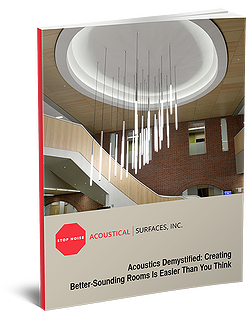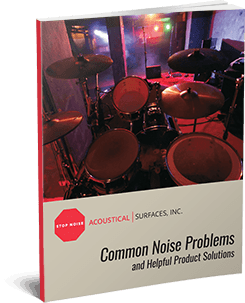Blocking External Noise: How to Reduce Traffic and Street Noise Outside
External noise can have a significant impact on the quality of both sound and personal comfort in the spaces where we spend our time. It can interfere with our sleep, concentration, conversations, and even relaxation, especially in urban environments where traffic, construction, or street activity is constant. Whether you live near a busy road or work in a space exposed to excess street sounds, finding effective ways to block outside noise is essential. In this article, we’ll explore some of the best ways to block urban noise, including practical home noise insulation tips, to create quieter, more peaceful indoor environments.
Why Reducing Street Noise Matters
As cities grow and traffic and public transit systems expand, urban environments have become increasingly saturated with noise. According to the World Health Organization (WHO), prolonged exposure to environmental noise can pose serious health risks, affecting everything from sleep quality and concentration to overall mental and physical wellbeing. Chronic street noise has been linked to elevated stress, impaired cognitive performance, and even cardiovascular problems. In response, modern architecture is placing greater emphasis on noise control, recognizing that reducing street noise is no longer just a comfort upgrade–it’s a critical part of designing healthier, more livable spaces.
Key Sources of External Noise Pollution
To stop noise from coming through walls effectively, it’s important to identify the main sources of external noise and the entry points that let it in. Pinpointing both the origin and how it penetrates your space is key to reducing its impact.
Common Urban Noise Sources
In most cities, the largest contributors of noise pollution include vehicle traffic, road noise, car horns, and emergency sirens. Dealing with highway noise, a persistent and often intense form of traffic sound, requires particular attention due to its volume and duration. Sirens are especially challenging to block because they’re intentionally engineered to penetrate barriers like car windows and alert people even in noisy environments. Construction equipment, such as jackhammers and bulldozers, also generates high-decibel sound, often for extended periods.
Public transit is another major culprit, particularly buses and trains. The deep, rumbling vibrations caused by trains, especially those that shake the ground or pass nearby, are extremely difficult to block using conventional soundproofing methods. Additionally, pedestrian noise (like loud conversations, barking dogs, or groups gathered outside) adds to the ambient soundscape. Finally, loud vehicles including motorcycles, cars with aftermarket exhaust systems, and vehicles equipped with subwoofers, can create sudden spikes in volume that are both disruptive and hard to ignore.
Here are the decibel levels of some common city sounds to help illustrate the range of urban noise pollution:
| City Sound | Approximate Decibel Level | Impact on Hearing |
| Whisper (for comparison) | 30 dB | Very quiet – safe |
| Normal conversation | 60 dB | Safe – mild background noise |
| Busy street traffic | 70-85 dB | Potential hearing damage with long-term exposure |
| Car horn from 15 feet | 100 dB | Very loud – even short exposure can be harmful |
| Motorcycle | 95-110 dB | Risk of hearing loss with prolonged exposure |
| Subway train (platform level) | 100-105 dB | Loud – can damage hearing over time |
| Fire truck / ambulance siren | 110-120 dB | Extremely loud – Immediate risk at close range |
| Jackhammer / construction | 100-130 dB | Very harmful – hearing protection needed |
| Threshold of pain | 130 dB | Sound is painful and damaging at and above this level |
Primary Entry Points for Noise
In most homes and apartments, a few specific areas account for the majority of sound passage:
Windows
Windows are often the most vulnerable surface when it comes to exterior noise. Understanding how to reduce outside noise through windows starts with addressing thin glass, poor seals, and large surface areas that let traffic, sirens, and street chatter penetrate easily.
Doors
Exterior doors, especially hollow or poorly sealed ones can allow significant amounts of noise to pass through. Even small gaps around the frame can leak surprising amounts of sound.
Walls
While walls may seem solid, many are not built to block airborne noise effectively. Thin materials, lack of insulation, or structural connections can allow sound to pass directly through or vibrate into a room.
Roofs & Ventilation Openings
Noise from overhead sources like airplanes, rain, or rooftop equipment can find its way in through attic spaces or roof vents, particularly in older or poorly insulated buildings.
Through-Wall AC Units
These units often create a direct path for sound to enter from the outside. Because they sit within a wall opening, they can significantly reduce the acoustic integrity of that barrier.
How to Reduce Traffic and Street Noise Indoors
Now that we know a little more about the sources of noise we are up against and the weak points in the facade and wall design, we can explore quiet room ideas and effective ways to block outside noise from making its way in. Here are some actionable steps for soundproofing your home from the inside:
Upgrade Outdated Windows or Add Window Treatments
If you’re wondering how to block noise from outside window areas, and your current setup isn’t cutting it, there are a few ways to improve performance. A full-frame window replacement offers the best thermal and soundproofing results, but it’s also the most expensive option. For a more affordable solution, consider window inserts. These magnetic panels snap inside your existing frames and add an extra pane with an air gap to reduce noise. As a simple, noninvasive option, heavy curtains for noise or acoustic drapes can also help dampen sound. While they won’t block noise entirely, they may reduce how noticeable or disruptive it is.
Soundproof Doors and Door Seals
The same goes for underperforming doors. You have a few simple options to make them block more sound. Replacing hollow-core doors with solid-core models can make a big difference. Adding automatic door sweeps and perimeter seals helps close the air baps where sound leaks through. For a more involved upgrade, you can remove the trim and seal the gaps between the door jamb and the framing behind it.
Even small improvements here can lead to noticeable noise reduction.
Insulate and Seal Walls
Walls may seem like thick, solid structures, but without proper treatment, they often fail to soundproof against outside noise, allowing more sound passage than you’d expect. Filling the wall cavities with dense mineral wool interior insulation helps absorb sound that would otherwise pass through. If you’re doing a full renovation, adding resilient channels or mass-loaded vinyl (MLV) overthe studs and drywall can significantly reduce vibration.
For additional noise reduction , apply Green Glue and a second layer of drywall to improve damping. You can also mount RSIC-1 clips and retro-washers over existing drywall to add isolation. Finish up with acoustic caulking to seal up any gaps or cracks.
Add Rugs, Wall Hangings, and Bookshelves
While soft surfaces like rugs, tapestries, and bookshelves can help absorb sound reflections within a room, they won’t do much to block outside noise. These additions might slightly reduce echo and make the room feel quieter, but their impact on actual noise intrusion is minimal. Still, if you’re looking for small, noninvasive ways to improve overall acoustics, they’re better than nothing.
Note: If you are a renter–either in a home or apartment–most of these multi-family building noise solutions will generally be out of reach, since they involve some level of construction and an investment that few landlords will want to get involved in.
Exterior Noise Barriers and Landscaping Solutions
If you have outdoor space, there are a few ways to reduce how much outdoor noise reaches your home, especially from nearby roads or neighbors. While some exterior acoustic solutions can help, it’s important to separate what actually works from what’s just decorative.
Install Acoustic Fencing or Sound Barriers
Properly built fences and walls, including an acoustic fence for street noise can reduce noise before it hits your home.
- Masonry walls and dense wood fencing with mass-loaded vinyl barriers are the most effective.
- Outdoor-rated acoustic panels can also help, especially when installed with enough mass and height.
- Height and density are critical–barriers need to be tall and solid enough to block the direct path of sound.
Use Landscaping as a Natural Sound Buffer
Landscaping is often overhyped as a noise solution.
- Hedges, shrubs, and trees mostly block the view, not the sound. Air and noise passes right through them.
- Earth berms or raised planter boxes only help if they’re very tall and thick, which isn’t practical for all yards.
- Water features won’t block sound, but can mask it slightly by adding a layer of ambient noise.
When to Hire an Acoustic Consultant
Some noise problems are too complex for DIY fixes. If you’ve tried some basic fixes and still struggle with disruptive noise, it may be time to bring in a professional. An acoustic consultant can evaluate your unique space, identify problem areas, and recommend targeted solutions that will save you time and money in the long run, especially if you’re aiming to create a 100% soundproof room or meet strict noise criteria.
Consider hiring an expert if:
- You live in a high-traffic area or a historic building with structural limitations
- You’re working in a mixed-use space or need a quiet home office
- You need formal documentation for legal cases, HOA disputes, or building code compliance
Consultants bring technical expertise and diagnostic tools that go beyond guesswork, making them invaluable in complicated situations.
Final Thoughts: Creating a Quieter, More Comfortable Home
Blocking noise from outside and reducing street noise isn’t just about peace and quiet–it’s about improving your overall quality of life. Whether you’re trying to sleep better, focus more easily, or simply enjoy your space without constant disruption, addressing noise pollution can make a real difference. From minimizing daily stress to protecting your long-term health, the benefits of traffic noise reduction are hard to ignore.
To get the best results, consider a layered approach. Combining interior improvements with exterior strategies can help you block outside noise more effectively. For tailored recommendations, reach out to one of our experienced team members to explore customized solutions that suit your space, budget, and needs.








